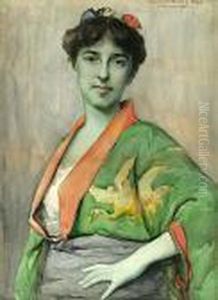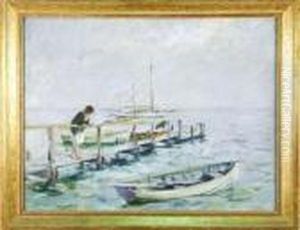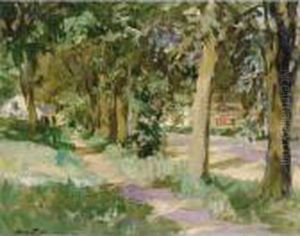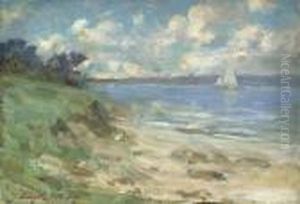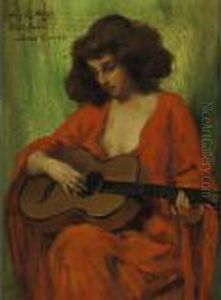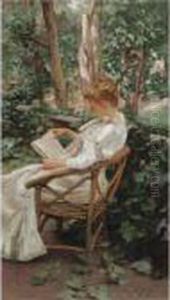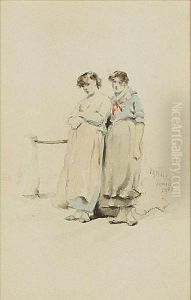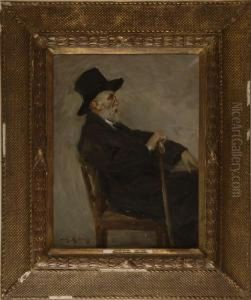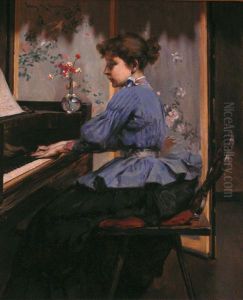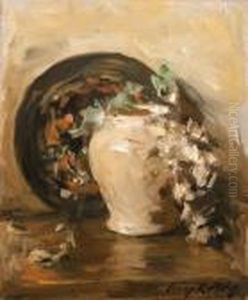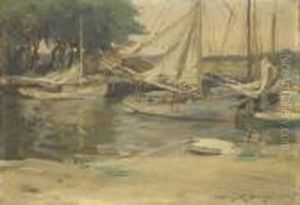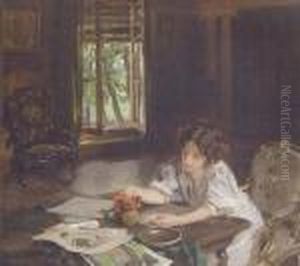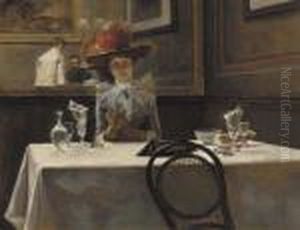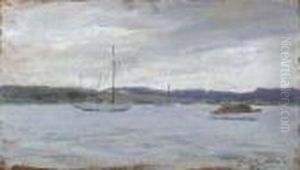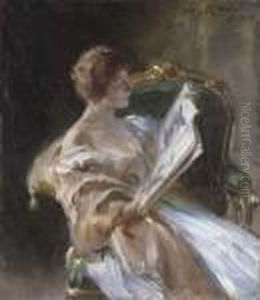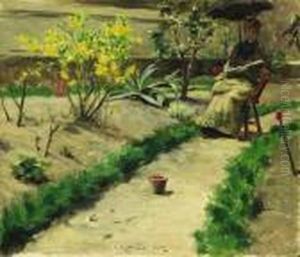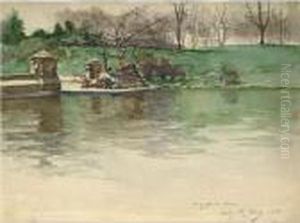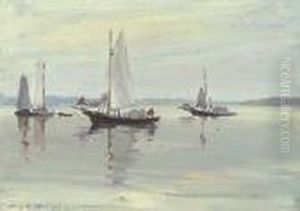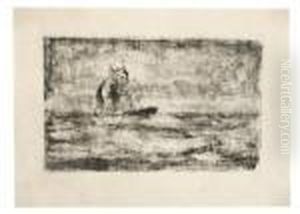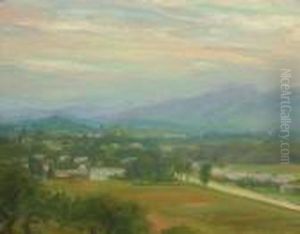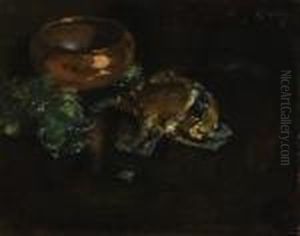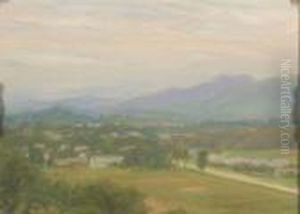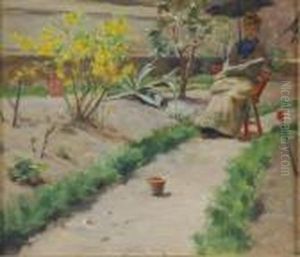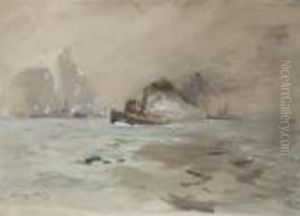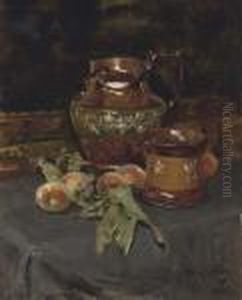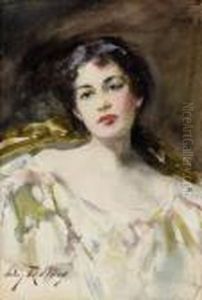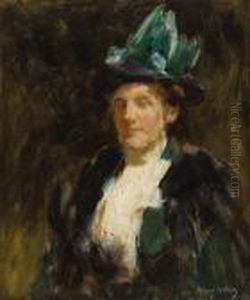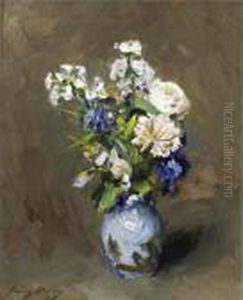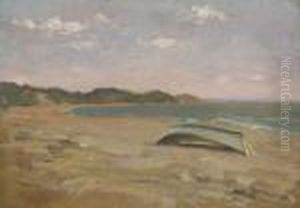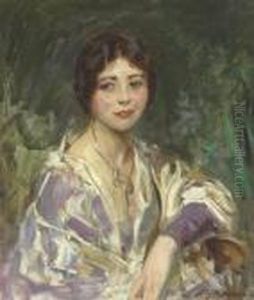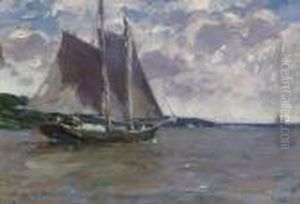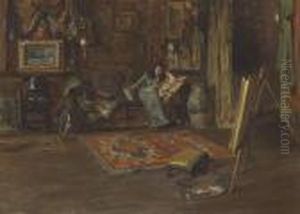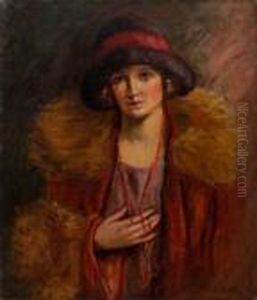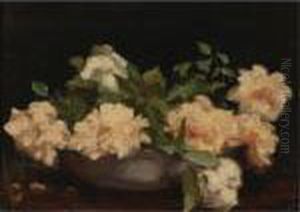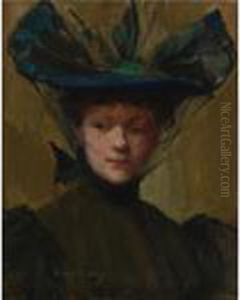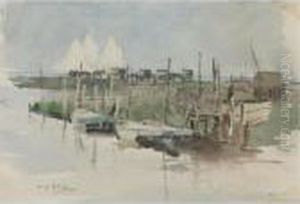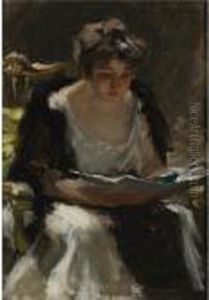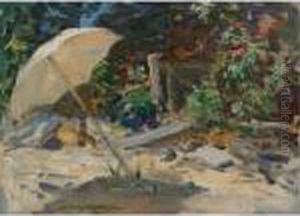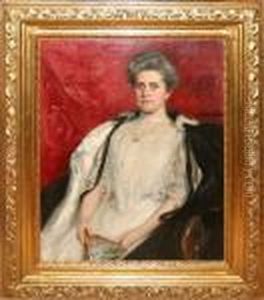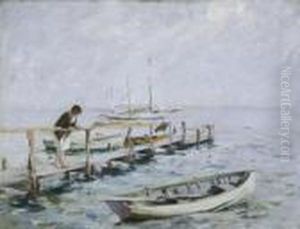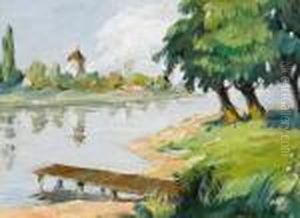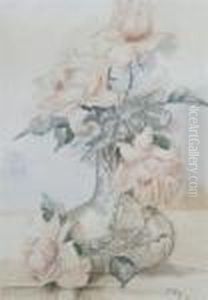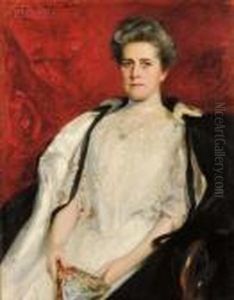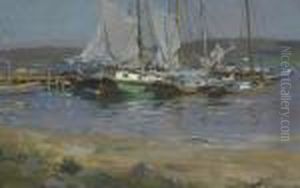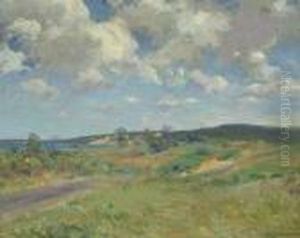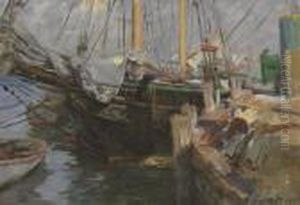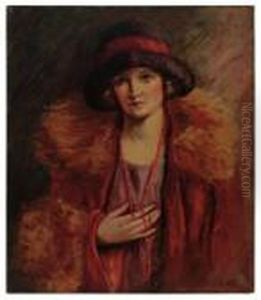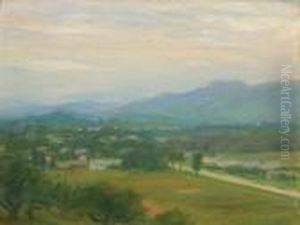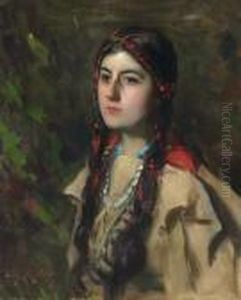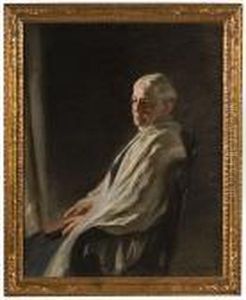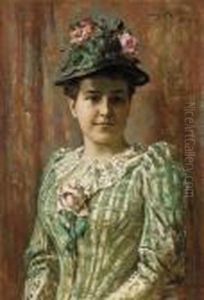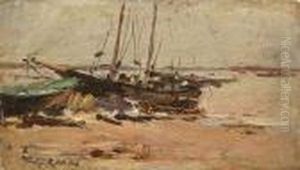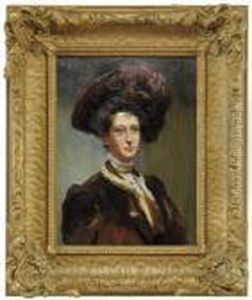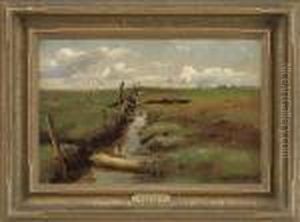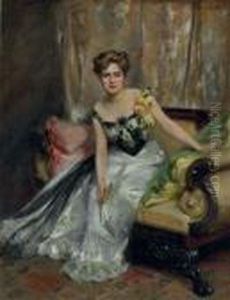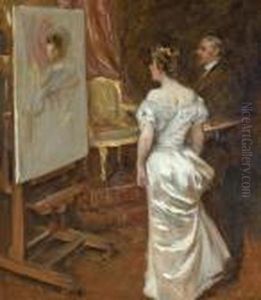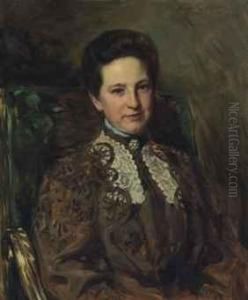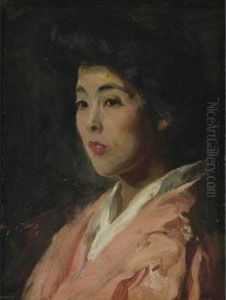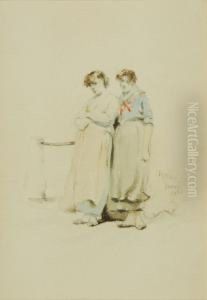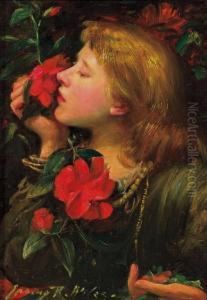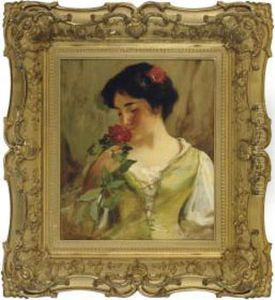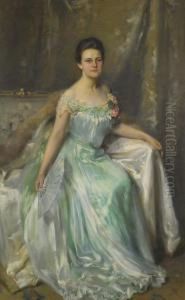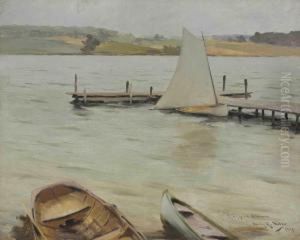Irving Ramsay Wiles Paintings
Irving Ramsay Wiles was a prominent American impressionist painter, known for his portraits and genre paintings. Born on April 8, 1861, in Utica, New York, he was the son of artist Lemuel Maynard Wiles, who played a significant role in shaping his early artistic development. Irving Wiles studied at the Art Students League of New York and later at the National Academy of Design, where he honed his skills and developed his distinctive style.
Wiles furthered his education by traveling to Paris in 1880, where he studied under Carolus-Duran, a renowned French painter of the time. He also spent time at the Académie Julian, immersing himself in the vibrant and evolving art scene in France, which had a lasting impact on his work. Upon returning to the United States, Wiles established himself in New York City, where he began to gain recognition for his elegant portraits, capturing the likeness and character of his sitters with sensitivity and skill.
Throughout his career, Wiles received numerous awards and honors, including a silver medal at the Paris Exposition of 1900 and a gold medal at the Panama-Pacific International Exposition in 1915. His works were exhibited widely, and he became a member of various prestigious art organizations, such as the National Academy of Design and the American Watercolor Society.
Irving Wiles was not only an accomplished portraitist but also a teacher who shared his knowledge and passion for art with others. He taught at the Art Students League and had many students who went on to have successful careers of their own. His teaching philosophy combined the rigor of academic training with an appreciation for the individual artist's personal expression.
Wiles's work captures the essence of the Gilded Age and Progressive Era in American history, with his subjects often including wealthy patrons, prominent social figures, and his own family and friends. His style was characterized by a light palette, loose brushwork, and an ability to render the effects of light and atmosphere, hallmarks of the American Impressionist movement.
He continued to paint and exhibit his work into the 1930s. However, with the changing tastes in art and the onset of the Great Depression, his prominence waned. Irving Ramsay Wiles passed away on July 29, 1948, in Peconic, New York. Despite the decline in his fame towards the end of his life, his work has since been re-evaluated, and he is now recognized as a significant figure in American art history, particularly for his contribution to American Impressionism and portraiture.
